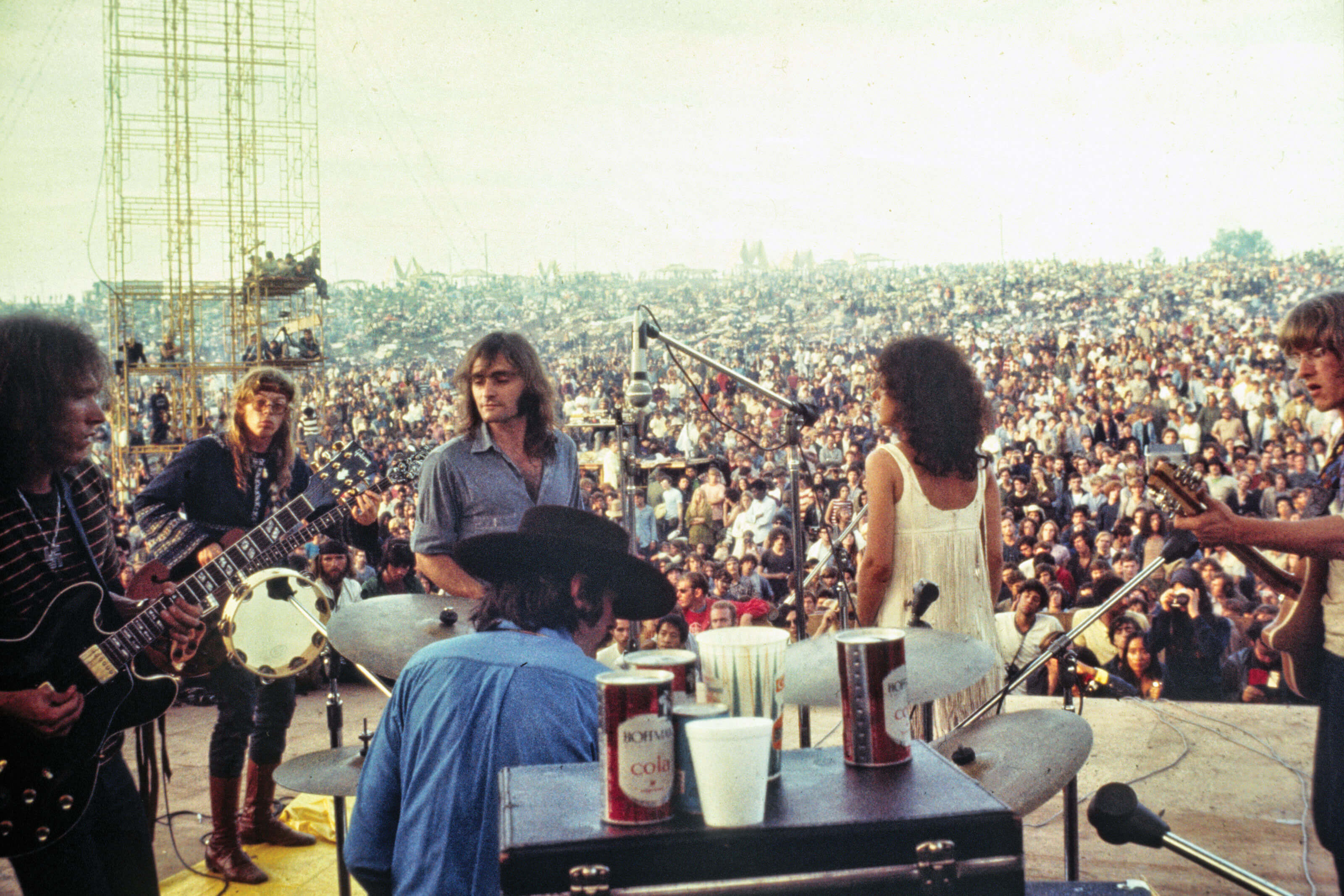
Caught in the Act
Mike Frankel ’72 shares the stories behind his photos of classic rock legends.
The first thing that Mike Frankel noticed about Jefferson Airplane was the band’s name. He was traveling with his mother in San Francisco in 1965 when he spotted posters promoting the group’s upcoming concerts. When the Airplane’s debut album, “Jefferson Airplane Takes Off,” was released in 1966, Frankel tracked down the record driven solely by curiosity about the group’s name. After a listen, he was hooked.
So, when Jefferson Airplane played a show at the Asbury Park Convention Hall, Frankel, then 18, grabbed his camera. He managed to run into the band backstage after the concert, and they asked Frankel if he would share his photos with them the next time they were in town. He did, and it wasn’t long before the Airplane was leaving his name at the door to places such as the Fillmore East so he could continue his craft.
Jefferson Airplane wasn’t the first group that Frankel photographed. He had been at this since a young age, continuously finding himself in the midst of serendipitous moments that have allowed him great access to massive talent and historic shows. The result is a decades-spanning collection of images of the music scene of the ’60s and ’70s, which he recently compiled into a book.
“Hurricanes of Color,” published by Penn State University Press, showcases not only the music scene, but also the evolution and experimentation of Frankel’s photography, which was heavily influenced by the sounds he was experiencing. From the Beatles staid press conference with the musicians in suits to Pete Townshend doing the windmill on his guitar when The Who first played “Tommy” at the Fillmore, Mike Frankel was there—and through the images and stories on the following pages, he’ll take you there, too.
Chuck Berry • Fillmore East, New York • February 1969

This is maybe the single most popular picture that I sell. People tell me it’s so iconic of Chuck and rock ‘n’ roll. … He looks like he’s sublimely lost in the music. At the time, Chuck played a lot of bars, but this was the Fillmore—the temple of rock ’n’ roll—and he understood the importance of it, and the crowd understood the importance of it. I think it was a very big bridge between his music and the music of that day.
The Beatles • Convention Hall, Philadelphia • September 1964
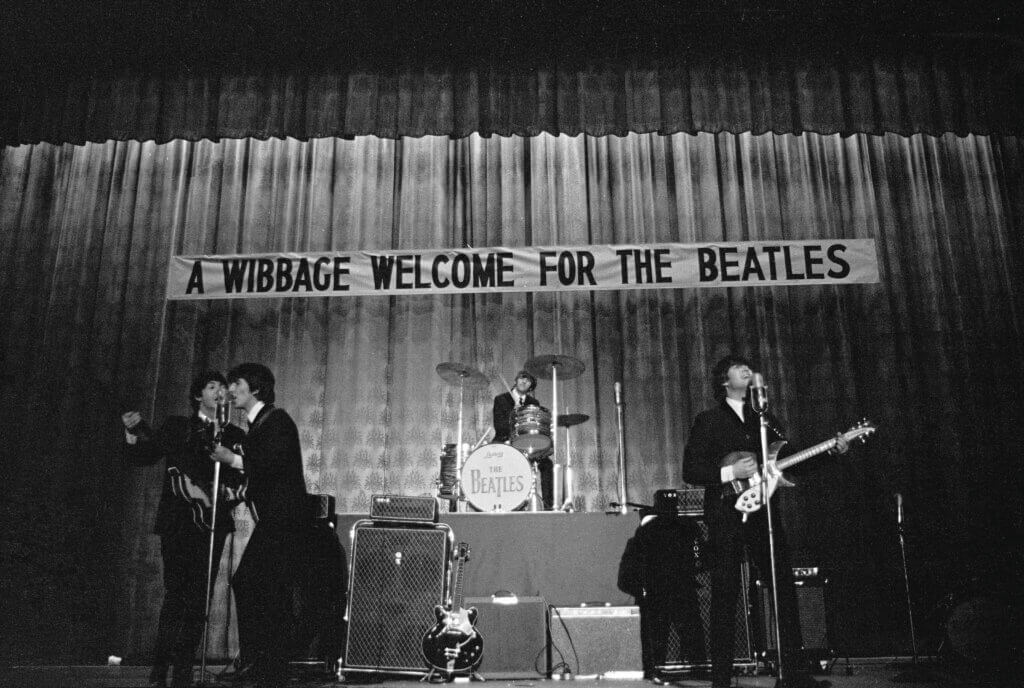
My dad had gotten tickets, and when we showed up, there was a massive group of teenagers screaming and running to the venue. In the midst of it, I heard some guy yell, “Hey, what are you doing here?” It was an off-duty policeman who used to do security at Convention Hall, where I took photos of concerts all the time. I said, “What do you think I’m doing here? I’m seeing the Beatles.” He said, “Well, do you want to see the mop tops up close? Come with me.”
He took me inside and opened a set of doors to the Beatles’ press conference. I had one roll of color film and several rolls of black-and- white film. I thought it was so special getting into the press conference that I used the color film, and I was left with the black and white film for the concert. In retrospect, I wish I had done it the other way because there are very few, if any, color pictures of them from that first tour.
Jefferson Airplane • Woodstock • August 1969

When I saw Jefferson Airplane in Atlantic City in the summer of 1969, they mentioned the next festival they had on their schedule in upstate New York—this little thing called Woodstock. Nobody at that time had any idea what was to come. I wound up on the stage on Saturday and told myself, ‘I’m not going anywhere.’ That was around 4 p.m., and I didn’t leave the stage until close to noon the next day. This image was taken from right behind the amplifiers. I had free reign of the stage during that time and encountered Janis Joplin and a passed-out Pigpen from the Grateful Dead. I was just a few feet away from Pete Townshend when he hit Abbie Hoffman with his guitar because Hoffman tried to make a political statement.

Robert Plant of Led Zeppelin • Fillmore East, New York • January 1969
This was Led Zeppelin’s first New York appearance. I knew Zeppelin, so I knew what we were in for that night, but the crowd, for the most part, did not.
This was just a few weeks after their first album had been released, and they were opening for headliners Iron Butterfly, which was riding on “In-A-Gadda-Da-Vida” fame.
When Zeppelin came out, they performed their entire album, plus a couple of blues songs, and the crowd was just bowled over. When Iron Butterfly performed, the crowd didn’t really react, except with pleasant applause.
They played two or three songs and the lead singer said, “We can’t compete with what you just saw. Goodnight and good luck.” They played maybe 15 or 20 minutes and left the stage.
David Bowie • Radio City Music Hall, New York • February 1973
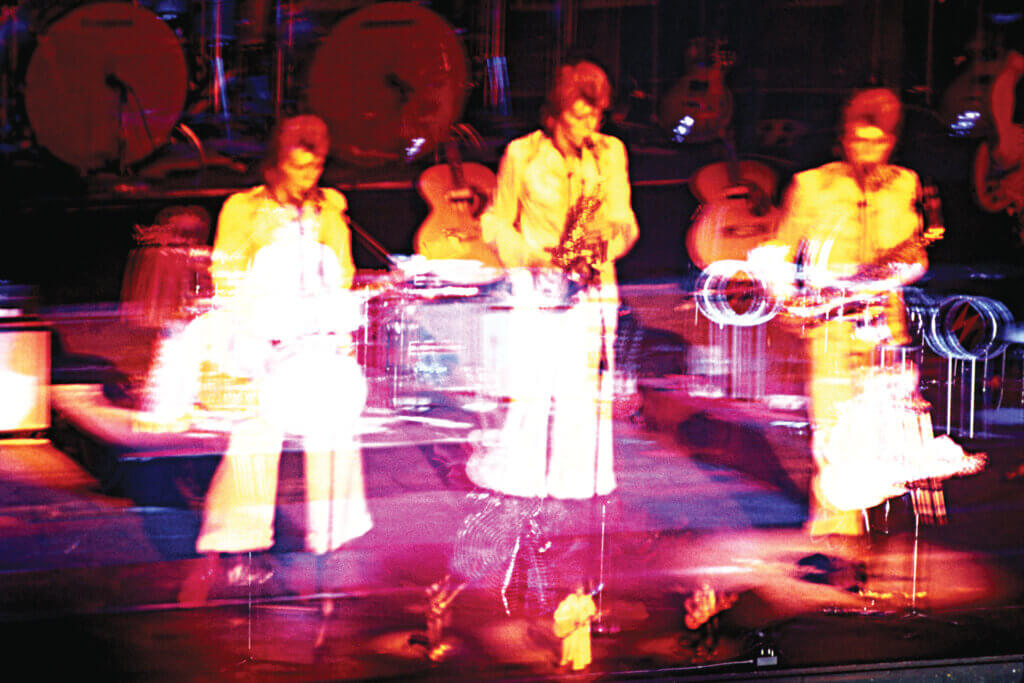
At this show Bowie performed the entire “Ziggy Stardust” album, plus a few other songs like “Space Oddity.” Up to that point, he was used to playing smaller clubs and venues. This was a watershed moment in his career—and it was rare that Bowie played saxophone.
After years of experimentation, I had my technique down. I would do an establishing shot of the group in a long shot—in this case it was at the bottom. To capture the three additional images, I would mask off the camera lens with my hand, take the first image, and that would leave the rest of the film dark. Then I would rewind and cover other parts of the lens to take the next shot and so on. I still get people who say, “That’s a great job in Photoshop.” I don’t take the Photoshop comments as insults, but it’s fun to watch people’s eyes widen when I tell them how it was done.
David Crosby, Graham Nash, and Stephen Stills • Fillmore East • September 1969
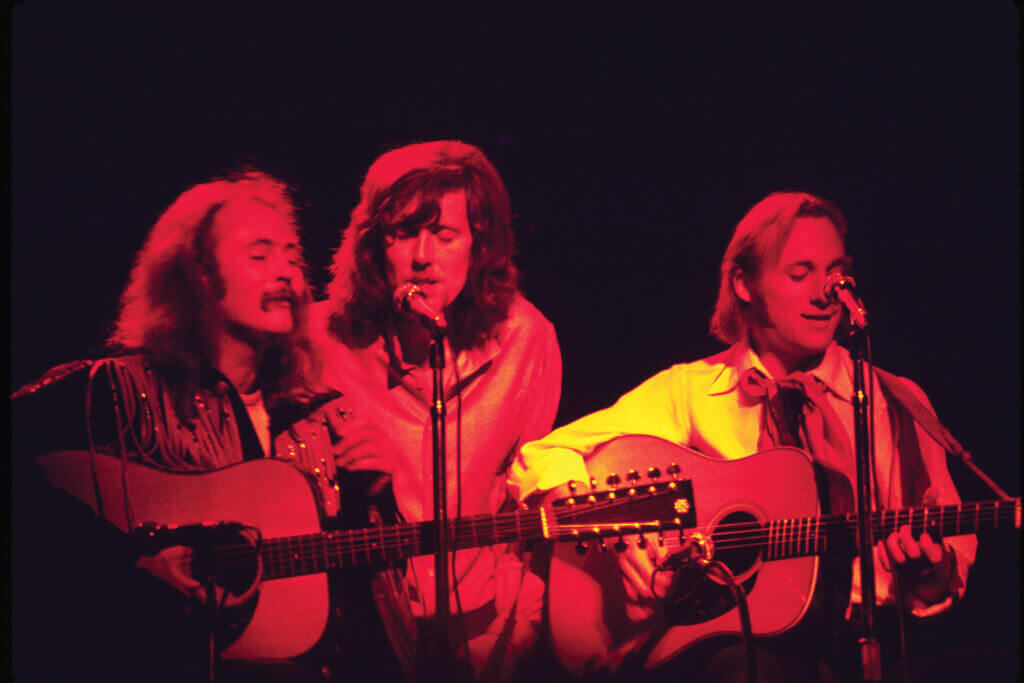
I had to leave Woodstock early … and one of the bands that I missed was Crosby, Stills, and Nash. But I was fortunate because a month later they played New York … and Neil Young joined them. I have pictures of all of them. This one was taken during “Suite: Judy Blue Eyes.” There’s a bridge in it where they build the harmonies and add and add, and it comes to such a crescendo. When they hit those harmonies, the audience was awestruck. They were just rendered completely silent before erupting into applause. To hear these three voices together for the first time was just unbelievable.
Keith Moon and Pete Townshend of the Who • Fillmore East, New York • May 1969
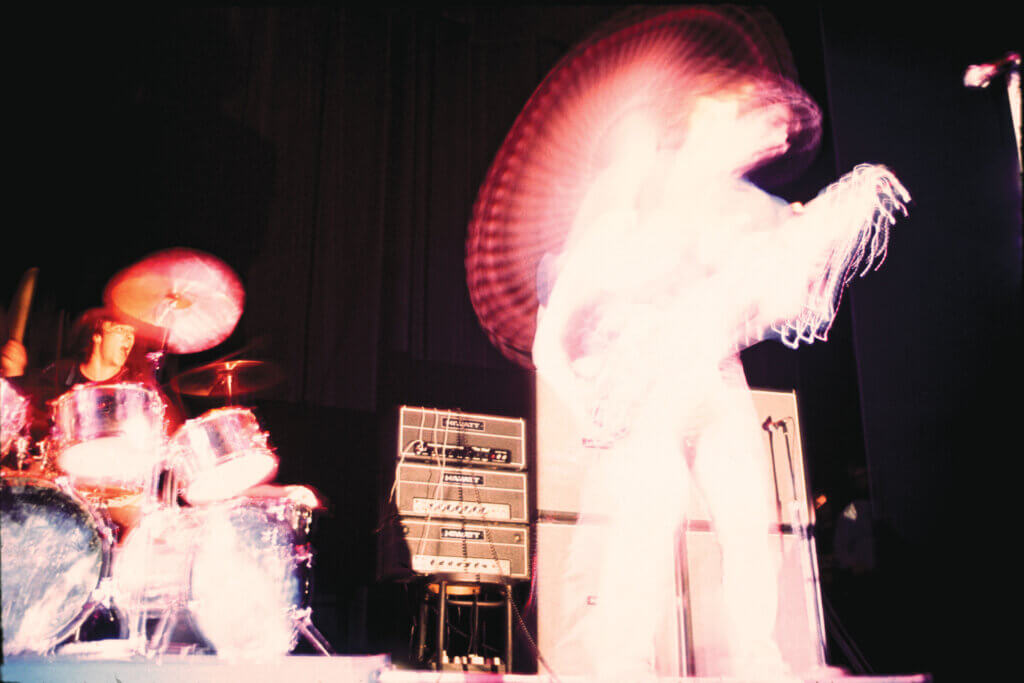
Pete Townshend was famous for doing the windmill on his guitar. And that was a tough thing to really represent. This image from May 1969 was when The Who first performed “Tommy” at the Fillmore. The crazy thing was that their concert was postponed by a night because of a fire at the venue. That’s why the background is black—the fire affected the lights, so there was no light show that night. But the dark background really lends to the drama of the image. Townshend almost looks like a bird in flight.
Neil Young • Fillmore East, New York • March 1970

This is one of my all-time favorites, because it is made up of 10 separate images. It stands as the largest number of rewinds and multiple shots I’ve ever done to create a single image. In the book, there’s another image of Young taken on the same day as a partial eclipse. I photographed the eclipse on a roll of film, rewound, and later captured Young in concert so he would be superimposed on the partial eclipse. That one I’m particularly proud of, because it was one image created from two different times in two different places.
Jerry Garcia and Bob Weir • Fillmore East, New York • May 1970
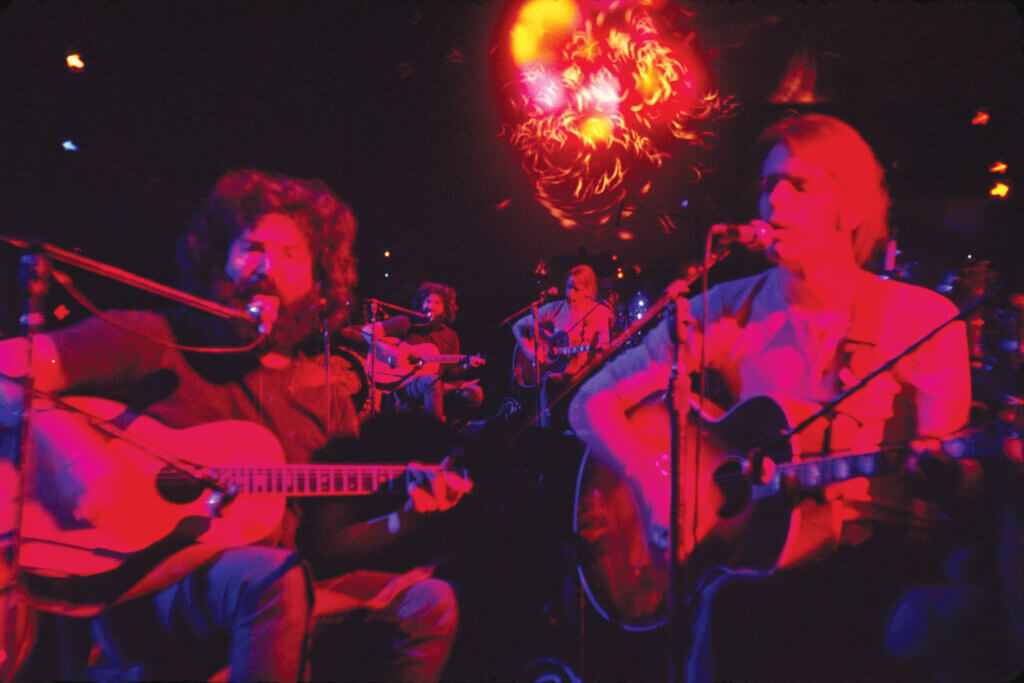
Back when the Grateful Dead would play, you almost never knew how many people were in the band. They didn’t even face the audience. They were feeding back. They were messing around with electronics, and the drummers were fooling around with different percussion instruments. But starting around 1970, Jerry and Bob would come out either before the main concert or in between sets and do a little acoustic set. This is more of a straightforward shot, but it’s one of my most popular Dead images, because everybody loves Jerry and Bob, and they so rarely did the acoustic thing back then.

About the Artist
Mike Frankel lives in Flagstaff, Arizona, and has been president and/ or executive director of the Artists’ Coalition of Flagstaff, the largest nonprofit art group in Northern Arizona, for more than 20 years. Frankel will be signing copies of his book at Lakehouse Recording Studios in Asbury Park at 5 pm on Sept. 22, 2024.